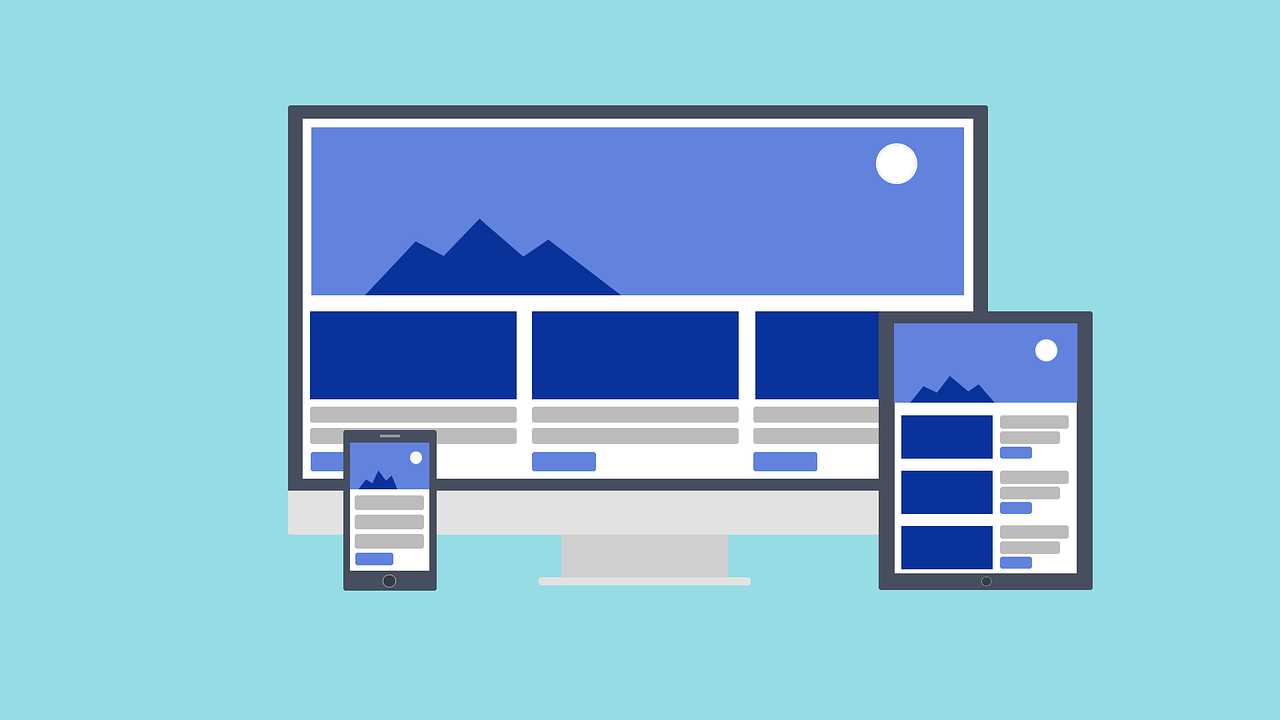Basics of Website Design
Become a Web Designer. Learn core structure of website, various types of websites, what to look in a site, etc. Design & Create a website of your own. View Course Curriculum
Price Match Guarantee
Full Lifetime Access
Access on any Device
Technical Support
Secure Checkout
Course Completion Certificate
View Course Curriculum
Price Match Guarantee
Full Lifetime Access
Access on any Device
Technical Support
Secure Checkout
Course Completion Certificate
 84% Started a new career
BUY THIS COURSE (
84% Started a new career
BUY THIS COURSE (GBP 12 GBP 29 )-
 95% Got a pay increase and promotion
95% Got a pay increase and promotion
Students also bought -
-

- SEO (Search Engine Optimization)
- 25 Hours
- GBP 12
- 273 Learners
-

- Digital Marketing & SEO
- 80 Hours
- GBP 12
- 3327 Learners
-

- Professional Diploma in Digital Marketing
- 50 Hours
- GBP 132
- 2378 Learners

Basics about Website, the World Wide Web pages usually containing hyperlinks to each other and made available online by an individual, company, educational institution, government, or organization. A website is a collection of publicly accessible, interlinked Web pages that share a single domain name. Websites can be created and maintained by an individual, group, business or organization to serve a variety of purposes.
Building a WordPress website, the WordPress is an excellent website platform for a variety of websites. From blogging to e-commerce to business and portfolio websites, WordPress is a versatile CMS. Designed with usability and flexibility in mind, WordPress is a great solution for both large and small websites.
The Steps to Launch a website:
1).Choose a domain name
b).Register a domain and sign up with web hosting
c).Set up a website using WordPress (through web host)
d).Customize your website design and structure
e).Add important pages and content
f).Set up a navigation menu
g).Add an online store (optional)
The types of websites you can build with WordPress:
1).Blog – A blog is a special type of website devoted to sharing thoughts, photos, reviews, tutorials, recipes and so much more.
2).Business website – Many businesses will benefit from having an online presence in the form of their own website. If your business needs a website for customers to learn about your company and what you have to offer, WordPress is an excellent option.
3).Portfolio website – Show off your artwork, design skills and more with a portfolio website built on WordPress.
4).Forum website – A forum website can be a helpful place for users to ask questions or share advice. Believe it or not, many forum websites run on WordPress.
5).Event website – Hosting an event? WordPress makes it easy for you to share your event details and sell tickets.
WordPress is an open-source Content Management System (CMS), which allows users to build dynamic websites and blogs. WordPress is the most popular blogging system on the web and allows updating, customizing and managing the website from its back-end CMS and components.
Website is a location on the web and is hosted on a web server. It is a set of related web pages. It is accessed using the Internet address known as Uniform Resource Locator.
In this Basics of Website and Building WordPress course by Uplatz, it will teach anyone to build a functional, beautiful, responsive website with WordPress, Understand the main features of WordPress, Know how to configure WordPress for best results, Understand plugins & themes and how to find/install them.
Course/Topic - Basics of Website Design - all lectures
-
In this tutorial we will learn everything about the website and how they function. We will also cover how websites are built and how they are put on the web. Last we will learn how to create basic website using WordPress.
-
In this video we will see the advanced features on how to build website, also we will walkthrough certain other aspects of WordPress. We will see why WordPress is the most popular framework for building websites.
-
In this session we will see the last parts of building websites using WordPress. We will also cover the types of WordPress websites, differences in the types of websites.
-
Lesson 13 - Various Types of Websites
-
Lesson 14 - What to see in a Website
-
Lesson 15 - Basic Webpage Designing
-
Lesson 16 - Creation of a Website
-
Lesson 17 - Website Core Structure
This course will help you in taking big leap in your prospective career and you will learn :-
a).You will discover how does web works really, what makes web sites work.
b).Simple and impressive design techniques, from basics till advanced to focus on goal oriented and
c).user centric designs.
d).How to and where to start research, planning for website & actually build excellent web sites. Pro level skills in SEO with keyword research and content strategy for your website
e).To create web elements like buttons, banners & Bars and of course complete UI designs. Forms and validations for your website.
f).Setting up page layout, color schemes, contract, and typography in the designs.
g).Writing valid and concise code for WebPages.
h).Best use of social media for revenue generation.
i).Setting up a perfect landing page for business, clients and yourself.
Basics of Website and Building WordPress Website – course curriculum
1).Intro to WordPress
2).What is WordPress CMS and why use it?
3).WordPress.com vs WordPress.org
4).A Quick Tour of the Wordpress.com Dashboard 5 Minute Installation of WordPress.org
5).A Quick Tour of WordPress.org Dashboard Building A Website in WordPress.com
6).Due: Gmail / Google Analytics Account WordPress.com
7).Website with posts, pages, and widgets and menus Using Plugins BuddyPress SEO
8).Yoast & Google Analytics Free and Premium Themes Working with Twenty Twelve Theme and a Premium Theme Building A Website (open source version)
9).Website with posts, pages, media, widgets and plugins HTML & CSS Review
10).How to use HTML & CSS within WordPress Using WordPress Theme Editor Customizing Themes WordPress Level I Course Syllabus and Outline Building An E-Commerce Website
11).WordPress.org Website with posts, pages, media, widgets, plugins and theme customization Final Exam Intro to Advanced Theme Development PHP Basics
a).In depth look at Google Analytics
b).More SEO
If you’re interested in becoming a WordPress developer – or even just developing your own website – you may be interested in WordPress certifications to help you learn and add credentials to your resume.
No, you don’t – there are no rules about who can work on WordPress sites. Nor are there any official WordPress certifications. That is, the WordPress Foundation, which is the actual non-profit behind the WordPress software, doesn’t directly offer any certifications.
What you can find, though, are some unofficial WordPress certifications from third parties.
These certifications offer a more structured way to ensure that you know all the ins-and-outs of WordPress. Additionally, they give you something tangible to market yourself to potential clients or put on your resume.
The use of WordPress to build efficient websites has become mainstream nowadays. Launched in 2003 by Matt Mullenweg and Mike Little, WordPress is an easy to use content management systems (CMS) that expanded widely over the years. Today, around a quarter of all the websites on the internet are powered by WordPress.
Although it is a technical platform but doesn’t require the users to be a complete tech whiz. It is one of those platforms where not only the developers and technical professionals but also the content creators and bloggers are making names for themselves. Simply said, WordPress has become a good career path for many individuals.
Anyone can make a breakthrough in their career using WordPress, without any professional degree or formal training. Whether you are a blogger, developer, designer, marketer, content creator, or even an educator, you can find career opportunities with WordPress.
Website Developer Job Titles :
a).Front-End Web Developer
b).Web Designer
c).Full-Stack Developer
d).WordPress or Shopify Developer
e).Web Analyst
f).UX/UI Developer
g).Technical Consultant
Q1.What are the most commonly used languages and platforms for website design?
Ans-The following are the main languages or platforms used for web designing:
a).HTML which stands for Hypertext Markup Language that helps design the base template.
b).CSS which stands for Cascading Style Sheets is used for styling the pages.
c).JS which is JavaScript is used to code the functionality.
d).PHP or Personal Home Page which is used for server-side scripting.
Q2.What is HTML?
Ans-HTML is Hypertext Markup Language which is the most used language for making web pages or websites.
Q3. What is the function of CSS in web design?
Ans-CSS or Cascading Style Sheets are needed to give the look and feel of any website. They help in the management of font styles, sizes and color combinations that are required for web pages. One change in the CSS file will cause a change to the entire website because web pages retrieve data every time and then display it.
Q4. What is an external style sheet?
Ans-An external style sheet is a document that contains the style information for many web pages or HTML files. The external CSS is normally linked via the LINK tag that comes under the HEAD element. This external CSS with the elements must have the relevant extensions such as style.css.
Q5. Differentiate between HTML elements and HTML tags?
Ans-HTML elements are used to communicate with the browser to render text. HTML tags are elements surrounded by angular brackets. HTML tags surround text and come in pairs.
Q6. What is Semantic HTML?
Ans-Semantic HTML denotes a coding style where the tags indicate the semantics of text that is to be conveyed. For e.g., denotes bold text, denotes italics and so on. Semantic HTML only represents formatting without any structure or meaning.
Q7. Explain the term DOCTYPE.
Ans-The term DOCTYPE conveys to the browser what type of HTML must be used on a web page. In turn, the browser uses DOCTYPE to determine how a page must be rendered. Not using DOCTYPE may load the page in the incorrect mode.
Q8. Explain the difference between Standard Mode and Quirks Mode.
Ans-Quirks mode is a compatibility mode which may be different in each browser. This causes inconsistent appearance in the different browsers.
Standard mode is a consistent mode of display used across all browsers.
Q9. What are the shortcomings of XHTML pages?
Ans-XHTML has poor browser support. Internet Explorer and other browsers cannot parse XHTML into XML.
Q10. How many HTML tags are needed for the basic HTML page?
Ans-There are 4 sets of HTML tags that are needed for a basic HTML page and these are:









